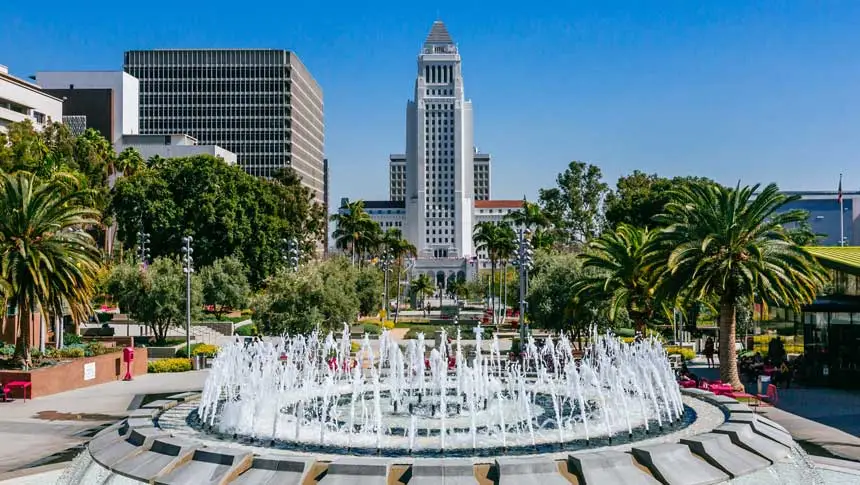Finding the Right Rehab for Drugs in LA
Table of Contents
- Finding the Right Rehab for Drugs in LA
- Substance Abuse in LA: The Need for Drug Rehab Los Angeles Services
- A Storied History: Addiction Treatment Los Angeles
- An Infamous Skid Row in the City of Angels
- The Current Approaches to Substance Abuse Treatment in Los Angeles
- What is the Cost of Living in Los Angeles?
- Los Angeles: The Epicenter of the Entertainment Industry
- Find Top Addiction Treatment Options in LA or Nationwide Now!
The city of Los Angeles is large, with a total area of 468 square miles and a population of almost 4 million (as of 2016). It’s both densely populated and spread out: LA has a density of over 18,000 people per square mile, but you’ll also find plenty of wide-open spaces throughout its sprawling terrain. Finding a drug rehab Los Angeles can be easy, but finding effective programs with the features you’re looking for can be a lot harder.
Because of the area’s geography, several options exist for newcomers who want opportunities for neighborhoods of different cultures and backgrounds. The city has residential areas in the valley area of downtown, communities on the beach, subdivisions in the hills, and outskirt neighborhoods that extend outward toward the Coachella mountains and into the desert.
The City of Angels can be overwhelming to newcomers—or even natives who’ve lived here all their lives—but there are some ways to make the transition smooth. One way is by making sure you have reliable transportation options; another is maintaining your sobriety as much as possible during your transition from another state or country.
Los Angeles is no stranger when it comes to addiction. However, cities that deal with significant substance abuse issues are often more equipped to offer rehab services and outreach programs.
Substance Abuse in LA: The Need for Drug Rehab Los Angeles Services
Drug problems in LA have persisted for decades. The drugs may change, but the challenges haven’t. However, that hasn’t stopped the city from remaining proactive.
A gritty police force on the front lines of the battle against addiction has remained on high alert. Eventually, city officials realized that a show of force would never win the war on drugs.
This turned Los Angeles into ground zero for test runs on new social programs and alternative approaches to an inflated illegal drug market. When you have dominant multi-billion-dollar drug cartels in your backyard, engaging in the battle against substance abuse requires endurance, ingenuity, and perseverance.
Some would assume Los Angeles to be a bad decision in terms of relocating or even a temporary stay to receive addiction treatment. However, constant hardship breeds knowledge and strength, and LA is home to some of the most effective treatment programs in the country.
The options for therapy in the area run deep, but that’s to be expected in an area with more rehabilitation facilities per capita and square mile than anywhere else in the world. People come from all over the country to attend rehab in the Los Angeles area.
A Storied History: Addiction Treatment Los Angeles

Before the drug problems in LA, there were alcohol and tobacco issues. The first half of the 20th century was characterized by Prohibition—prohibiting alcohol sales—and increased organized crime activities. During this period, alcohol was still legal but difficult to obtain because it was illegal for manufacturers and retailers to sell it directly.
Alcohol was a significant problem in Los Angeles during the early 1900s. According to the book “Alcohol and Drug Abuse in America,” it was estimated that over 30% of California residents were heavy drinkers by 1910. The numbers were higher than elsewhere in the country, at least partially due to LA’s proximity to Mexico, where tequila was a favorite alcoholic beverage among residents and travelers alike.
The first significant outbreak of illicit substance abuse happened when soldiers returned from war after World War II. They brought back opium to California, where it had been used as an analgesic (pain reliever).
The soldiers shared their newfound love with their friends back home, who then shared it with other people they knew or met along the way. This led to an epidemic called “The Purple Heart Plague,” which lasted until 1957 when heroin became illegal in California after being linked to several deaths due to overdoses among teens in Compton and Long Beach.
An Infamous Skid Row in the City of Angels
In the 1980s, skid row in downtown Los Angeles was home to drug users and dealers and, although much smaller now, remains a problem area. This downtown area is one of the most storied parts of Los Angeles for all the wrong reasons.
At its peak, skid row was estimated to be home to around 8-10 thousand people living in tents and makeshift shelters. The area was a hotbed for drug abuse and sales, operating as the biggest open-air drug market in Los Angeles. A significant portion of the residents of Skid Row abused heroin, although every drug imaginable was available to anyone wandering past the encampment.
Many of these individuals were recently released from jail or prison; others were living in SRO (single room occupancy) hotels and shelters in this area because they could not afford rent elsewhere in LA County. The number of people using drugs on Skid Row was increasing, and the need for treatment programs aimed at aiding them with their addictions rose significantly.
Although Skid Row reached its peak in the 80s, its story goes back as far as the late 1800s. Old Civil War veterans who were disabled or displaced after years of hard fighting ended up “riding the rails.” They took advantage of the country’s new railroad system and hopped boxcars to make it to LA, which was the end of the railroad.
These migrants ended up on the corner of 4th and Los Angeles Street in a section known as “Hobo Corner.” Business owners in the area, fed up with the drinking and cussing, booted the homeless from the site, relocating to the same area Skid Row exists in today.
The Current Approaches to Substance Abuse Treatment in Los Angeles
In recent years, methamphetamine has been the most problematic drug in Los Angeles. Opioids are still a problem, and the city’s continuous battle with drugs has triggered a different approach to substance abuse, crime, and punishment.
Instead of taking a hard line against simple drug possession, Los Angeles focuses on prevention and recovery. Treatment and rehabilitation are priorities for the city to keep non-violent offenders out of the prison system.
While there are many 12-step groups in Los Angeles, they aren’t the only option. There are plenty of treatment programs that are secular and non-religious. For example, SMART Recovery offers a secular alternative to Alcoholics Anonymous. The treatment program uses an evidence-based approach to help people achieve their recovery goals without any spiritual components or religious affiliations.
The Mental Health Element of Substance Use Disorder Treatment in Los Angeles
Because of the extended history of homeless transients in Los Angeles, many of whom are veterans, the city has a comprehensive mental health system. Several programs exist as opportunities for the homeless or people with little to no income.
There are also programs based on cognitive-behavioral therapy (CBT). These treatment methods have been proven effective at helping people with substance use disorders improve their quality of life and reduce cravings for alcohol or drugs over time.
CBT can occur in one-on-one sessions with your therapist or group meetings where you share experiences with others going through similar struggles with addiction. These programs offer great assistance for people traveling or moving to Los Angeles for substance abuse treatment as secondary options or continued care after therapy.
People exiting treatment and making Los Angles a permanent dwelling have access to many sources of opportunity open to people looking for a fresh start.
What is the Cost of Living in Los Angeles?

The median gross income for people living in LA is around $50,000 per year. Considering that the median household income in the US is just over $56K annually and the national average cost of living runs at just under $57K, LA residents typically make more money than most other Americans.
That’s a good thing! It means you’ll have more money to spend on rent or whatever else you need to get by during or after substance abuse treatment. However, there are other opportunities than just jumping straight to employment.
Finding Higher Learning in Recovery in LA
The city is home to many colleges and universities if you’re looking for new options aside from your current trade or career. UCLA has a large student population that attends classes on campus in Los Angeles.
The university also offers online programs for students who want to pursue their education from home or another location. USC is another popular choice among local students, who can earn bachelor’s degrees and master’s degrees in various fields of study at this school.
These popular schools are just two examples of the many educational institutions located throughout Los Angeles County, so it’s easy to find an institution that fits your needs if you plan on attending college while living here.
Los Angeles: The Epicenter of the Entertainment Industry
It doesn’t get much better than Los Angeles if you’re into the arts and entertainment. The city is alive with various art schools and programs for people looking to obtain careers to further their artistic endeavors. Many people in recovery also find their way into professions associated with the film trade.
In Los Angeles and Hollywood, there are many entertainment careers available. Movies, television shows, and music are all major industries in Los Angeles.
The entertainment industry offers multiple career opportunities in Los Angeles, with Universal Studios being a significant employer for the city of LA. You don’t have to act to work in this industry – people work there constructing sets, providing maintenance, and a plethora of other trades.
People often move to Los Angeles seeking a better lifestyle and more opportunities. Whether you seek a job, start a new life, or escape from the past, it is possible to find treatment in Los Angeles. The vast range of economic options provides the chance to thrive and experience long-term recovery well after treatment.
Find Top Addiction Treatment Options in LA or Nationwide Now!
One of the best places to start looking for treatment options in Los Angeles is Find Addiction Rehab’s robust search platform. From one location, you can research facilities for mental health and substance abuse, making it easier to compare and contrast your options. This makes finding the most appropriate rehab that caters to your needs easier.
Spend less time searching and more time healing with Find Addiction Rehabs!
Edward lives and works in South Florida and has been a part of its recovery community for many years. With a B.A. in English Literature from the University of Massachusetts, he works to help Find Addiction Rehabs as both a writer and marketer. Edward loves to share his passion for the field through writing about addiction topics, effective treatment for addiction, and behavioral health as a whole. Alongside personal experience, Edward has deep connections to the mental health treatment industry, having worked as a medical office manager for a psychiatric consortium for many years.

